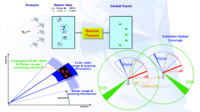
Photo from wikipedia
Detection of novel transcripts with deep sequencing has increased the demand for computational algorithms as their identification and validation using in vivo techniques is time-consuming, costly and unreliable. Most of… Click to show full abstract
Detection of novel transcripts with deep sequencing has increased the demand for computational algorithms as their identification and validation using in vivo techniques is time-consuming, costly and unreliable. Most of these discovered transcripts belong to non-coding RNAs, a large group known for their diverse functional roles but lacks the common taxonomy. Thus, upon the identification of the absence of coding potential in them, it is crucial to recognize their prime functional category. To address this heterogeneity issue, we divide the ncRNAs into three classes and present RNA classifier (RNAC) that categorizes the RNAs into coding, housekeeping, small non-coding and long non-coding classes. RNAC utilizes the alignment-based genomic descriptors to extract statistical, local binary patterns and histogram features and fuse them to construct the classification models with extreme gradient boosting. The experiments are performed on four species, and the performance is assessed on multiclass and conventional binary classification (coding versus no-coding) problems. The proposed approach achieved >93% accuracy on both classification problems and also outperformed other well-known existing methods in coding potential prediction. This validates the usefulness of feature fusion for improved performance on both types of classification problems. Hence, RNAC is a valuable tool for the accurate identification of multiple RNAs .
Journal Title: Briefings in bioinformatics
Year Published: 2021
Link to full text (if available)
Share on Social Media: Sign Up to like & get
recommendations!